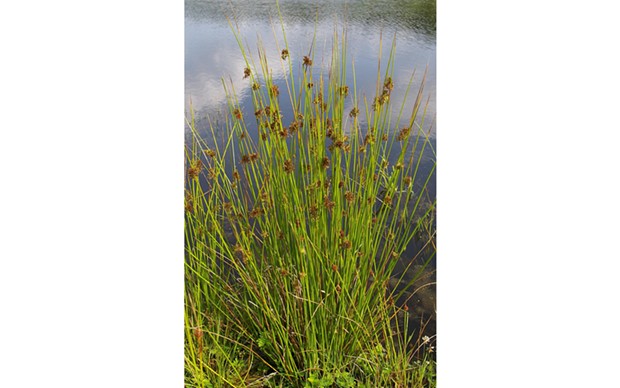[
{
"name": "Top Stories Video Pair",
"insertPoint": "7",
"component": "17087298",
"parentWrapperClass": "fdn-ads-inline-content-block",
"requiredCountToDisplay": "1"
}
]
Caveat lector: Though I'm familiar with the handy mnemonic. "Sedges have edges; rushes are round; grasses are hollow right up from the ground," I'm no botanist and I'm evaluating these plants from the point of view of a gardener.
It has taken me years to clear the stodgy, banal nursery plants out of our yard. I'm replacing them mainly with natives. Why buy another dreary boxwood when you could plant a wax myrtle? Why plant an expensive and uninspiring ornamental plum, when the vine maple is so much more interesting? Why line your walkway with store-bought periwinkles when you can dig sedges out of a friend's yard?
I'm currently enthusing over the common rush, a graceful perennial, which I've long associated with the Arcata Bottom (they're those tall clumps of "grass" that the cows don't eat). You see them in the median between Arcata and Eureka and in poorly drained fields and ditches. Still gracefully slender, even in full clumps, when planted in a pot they're a stunning architectural accent.
Locals generally don't appreciate rushes and tend to think of them as pests, in fact I found some of my information about rushes in a "field guide to noxious weeds." It baffles me that such regal, elegant plants are not appreciated, even by the most avid gardeners, and they are largely ignored by native plant enthusiasts.
I got my first few rushes from Rick Storre at Freshwater Farms. Their tiny flowers grow in dull panicles, laterally on the stalks (culms). The tiny seeds are dark red/brown. You'll only need one plant, as they reproduce prolifically from seeds, rhizome cuttings, and divisions of clumps. They grow without a lot of fuss, competing robustly with weeds.
Common names for the Juncus effuses are, common rush, bog rush, soft rush, Pacific rush, and candle rush. It is easily identified because it is notably larger than any other local rush.
The other native rush that is easily identified is the Juncus patens (California gray rush) or spreading rush. I call it by its other common name, the blue rush. More drought-tolerant than the common rush, the blue rush can thrive in full sun or dry shade. Happy to be confined in a pot, it's another strikingly elegant addition to a porch or patio.
Next time you drive along Highway 101 by Humboldt Bay, take a glance at the rushes. The smaller blue rushes will be easy to distinguish from the larger, medium green common rushes. They're bearing seeds right now, so it's a good time to grab a handful. Broadcast them in a drab quarter of your yard and you might be pleasantly surprised in the spring.
more from the author
-
Humboldt Valentine
- Feb 13, 2014
-
Sewage Treatment
- Feb 6, 2014
-
Annals of Never Thought I'd Hear It
- Jan 23, 2014
- More »
Latest in Get Out
Readers also liked…
-
A Walk Among the Spotted Owls
- Apr 27, 2023

































